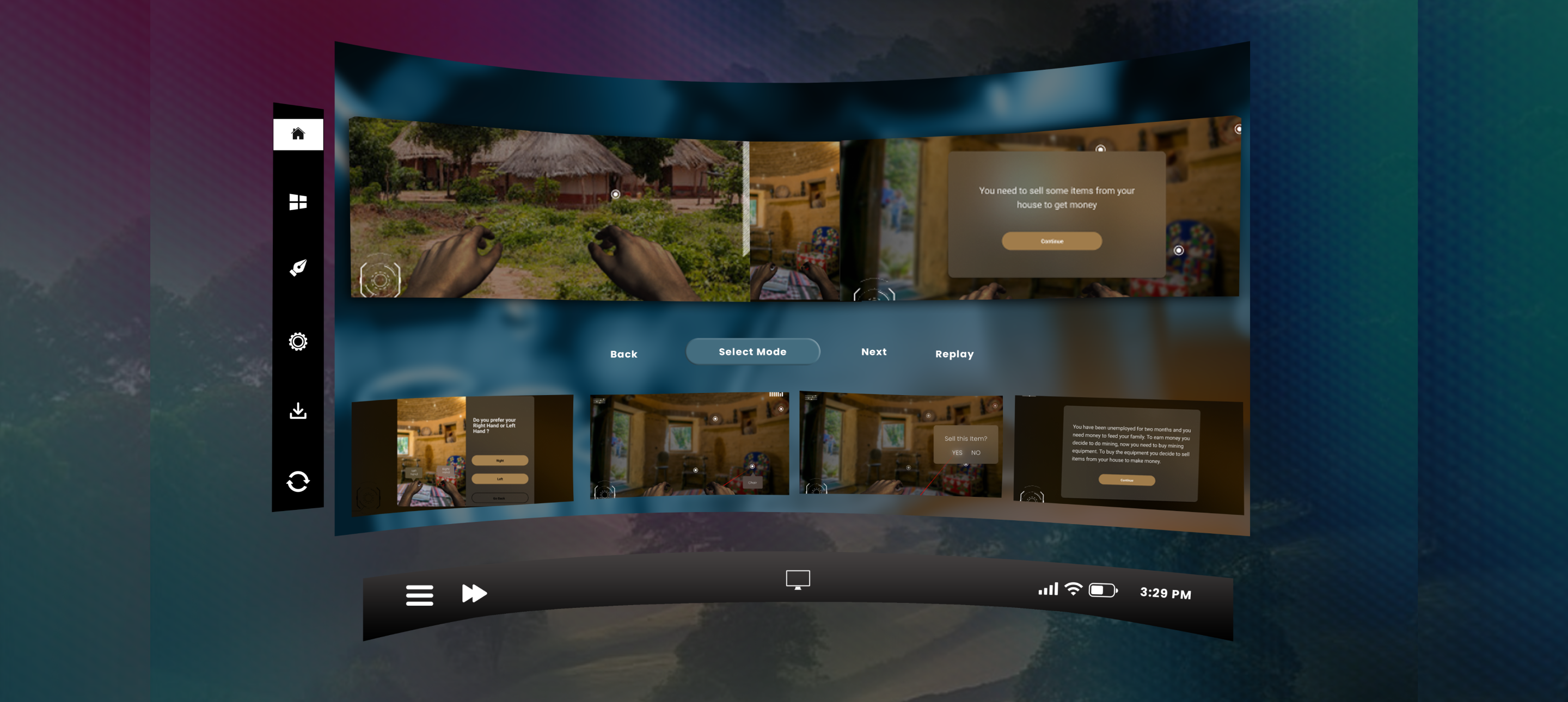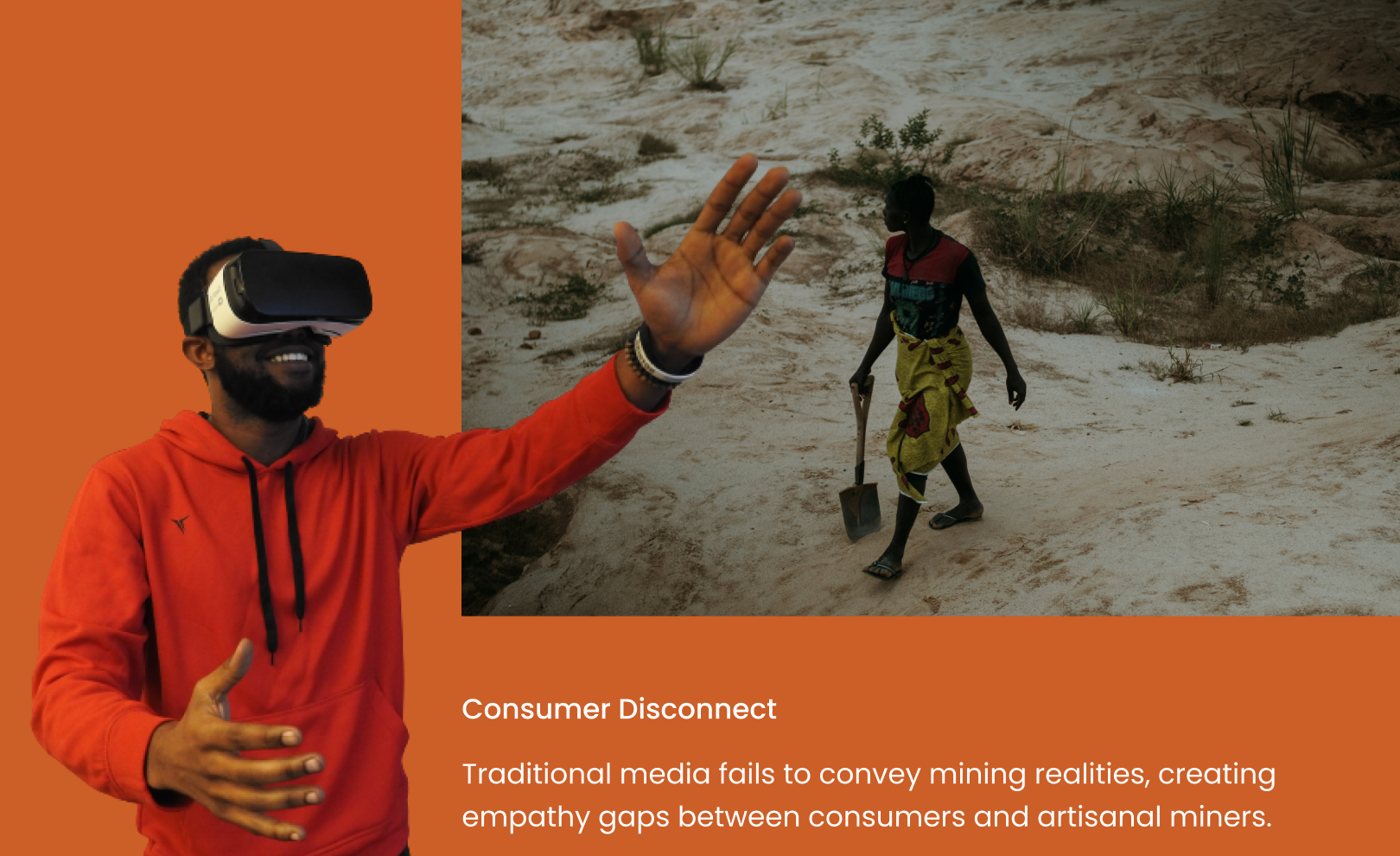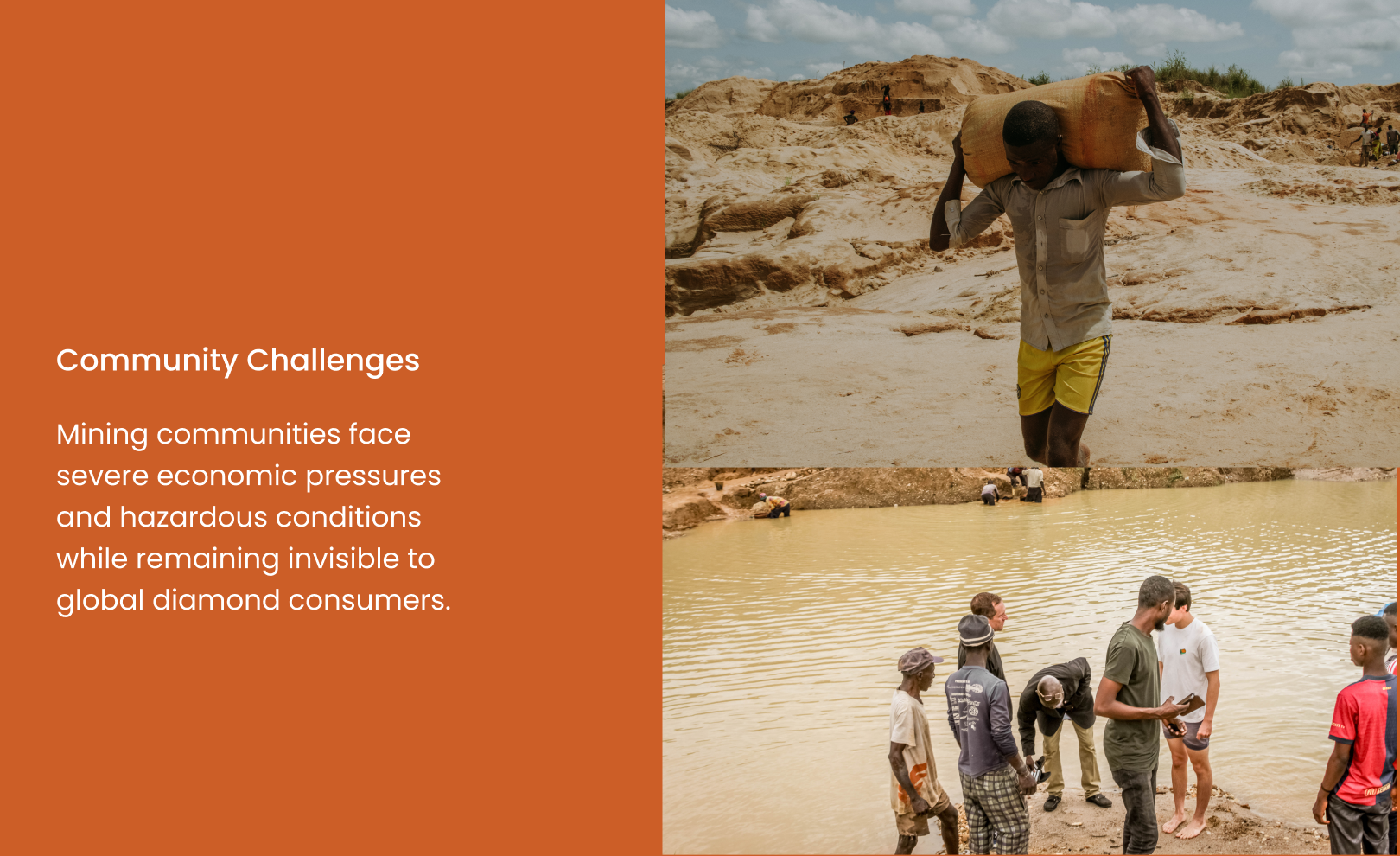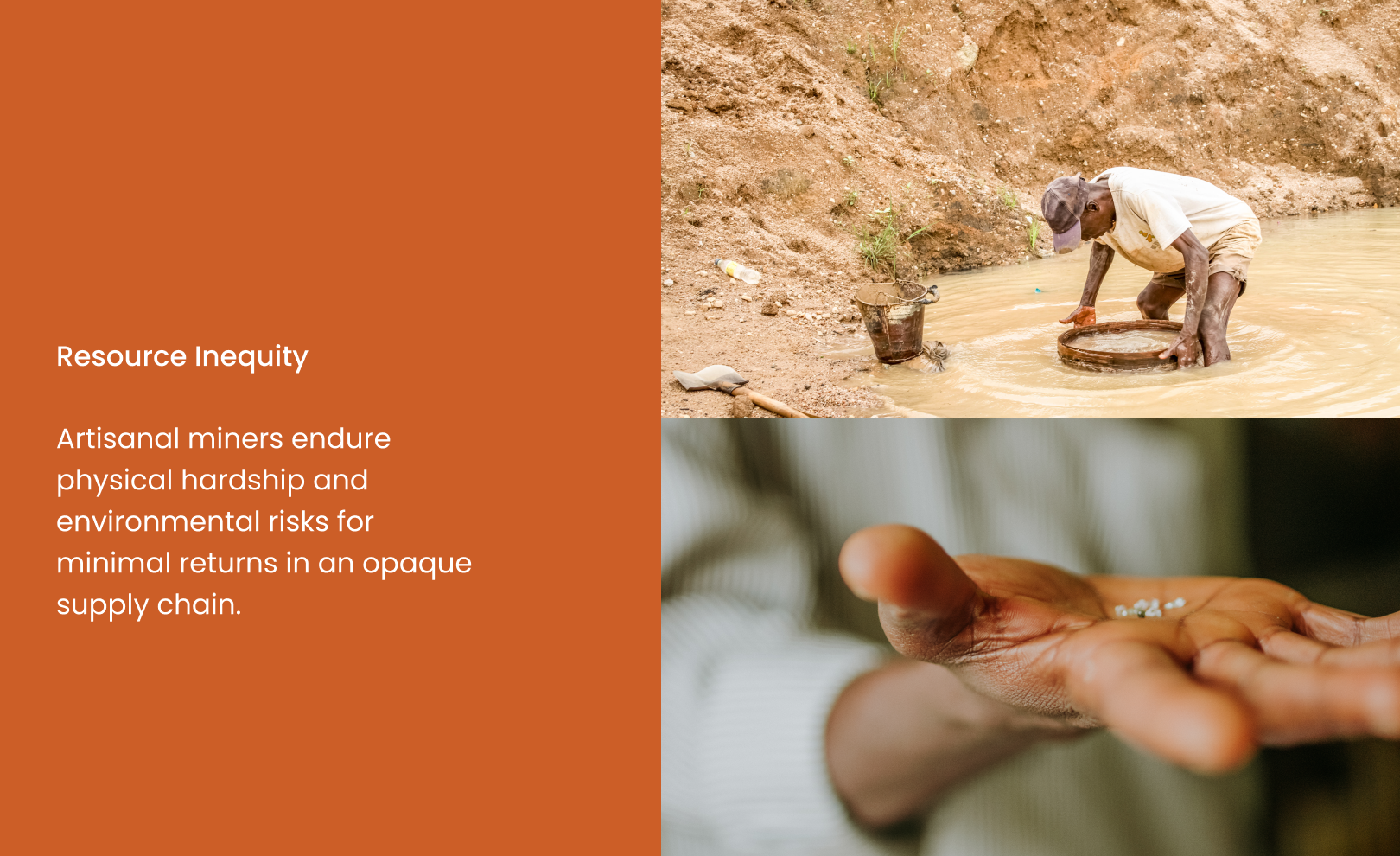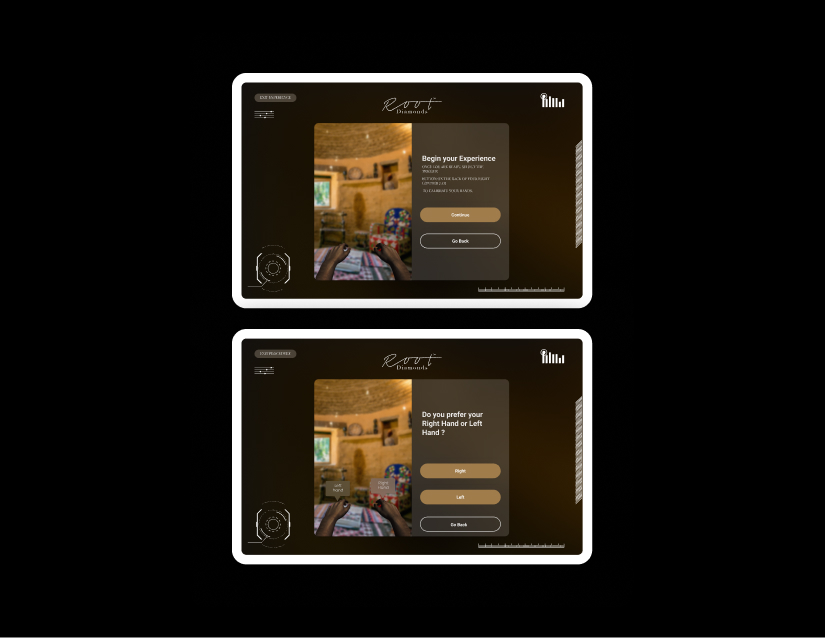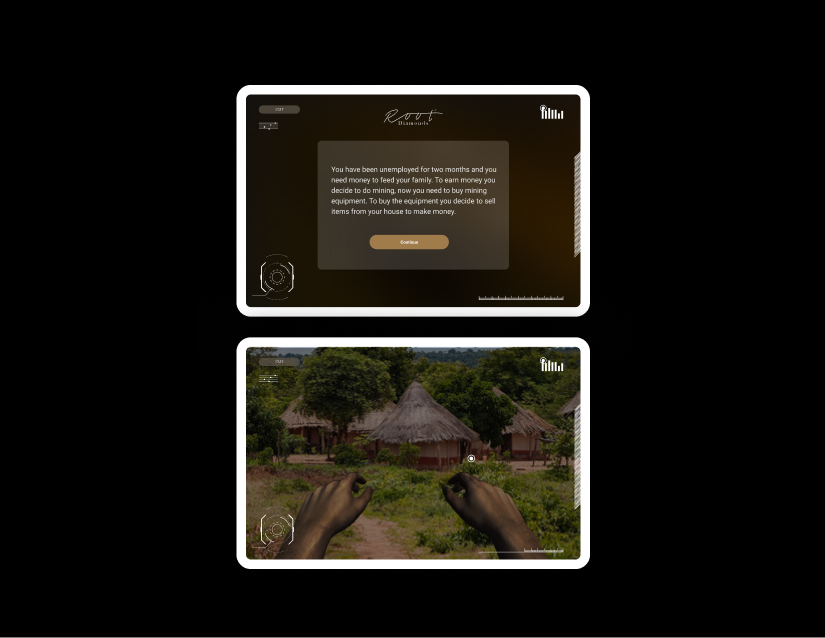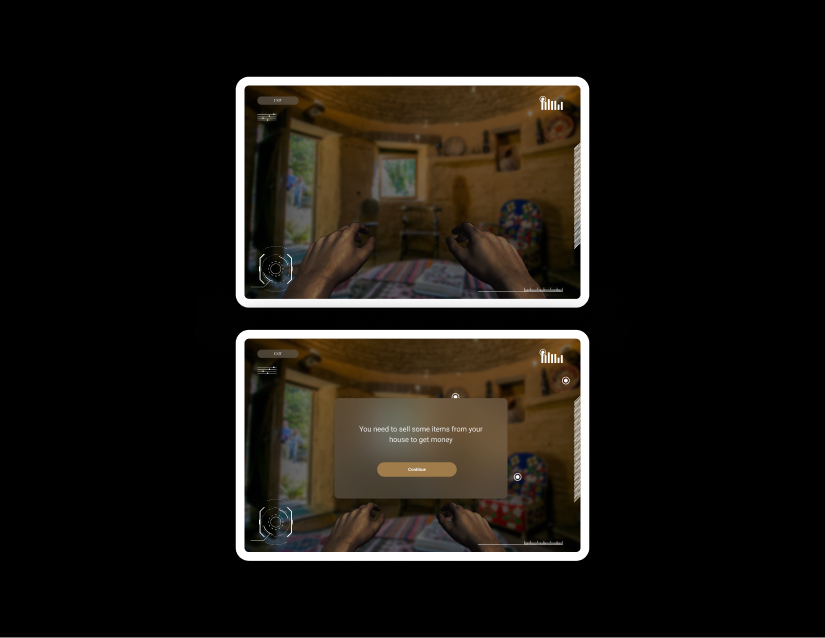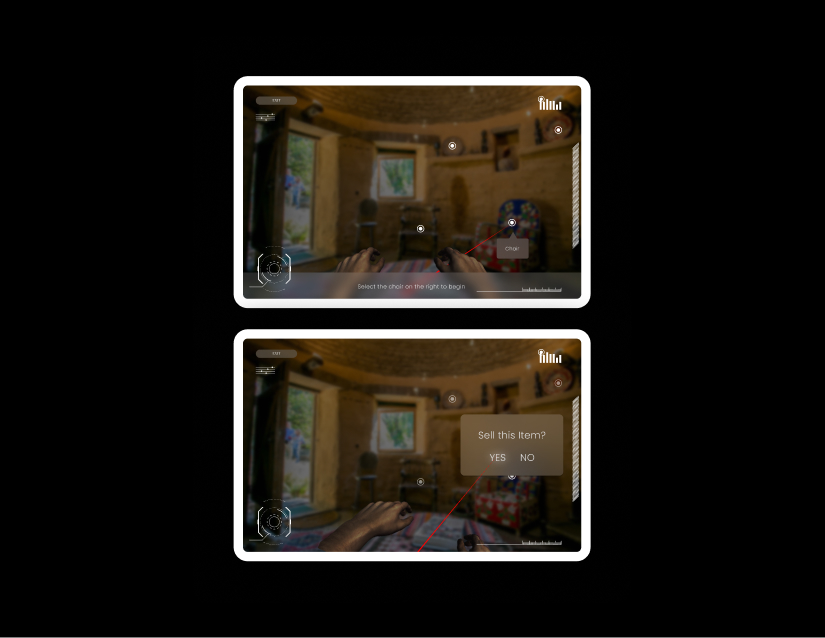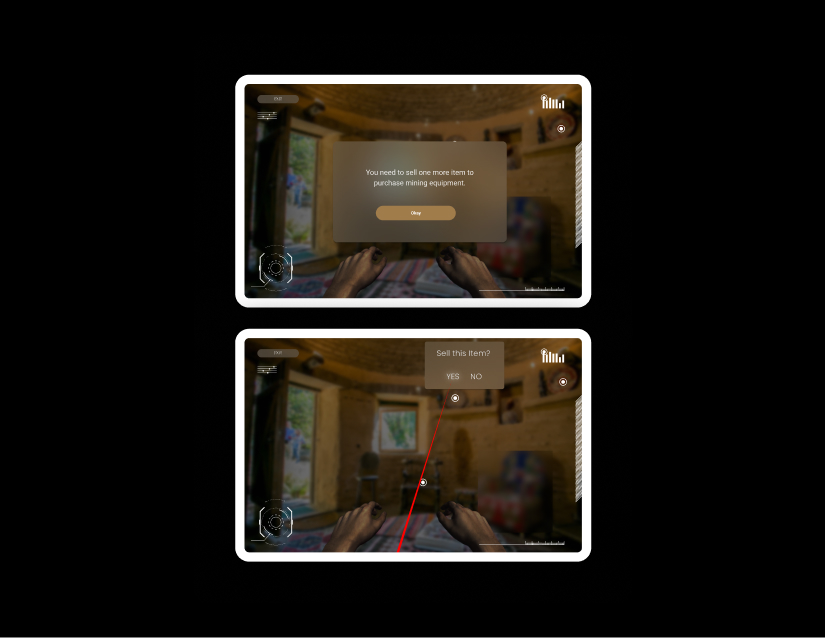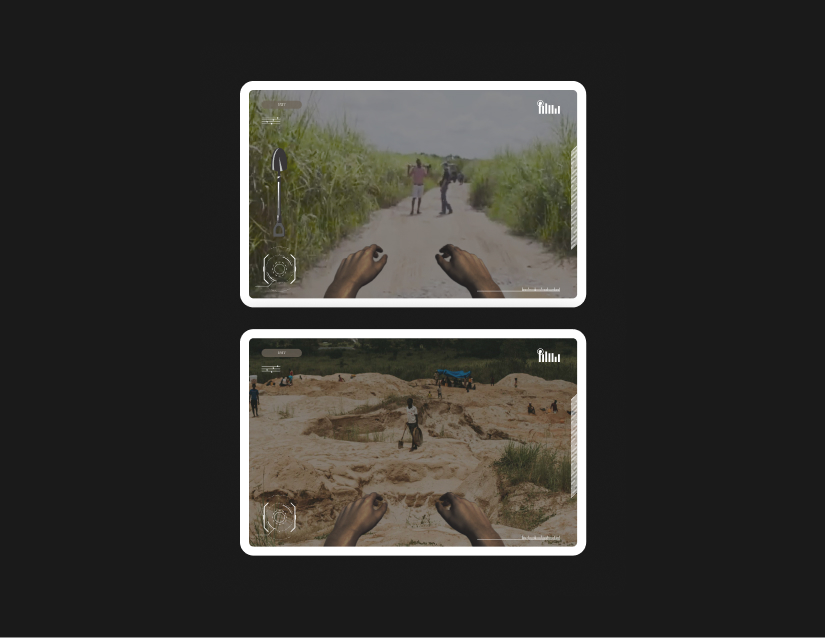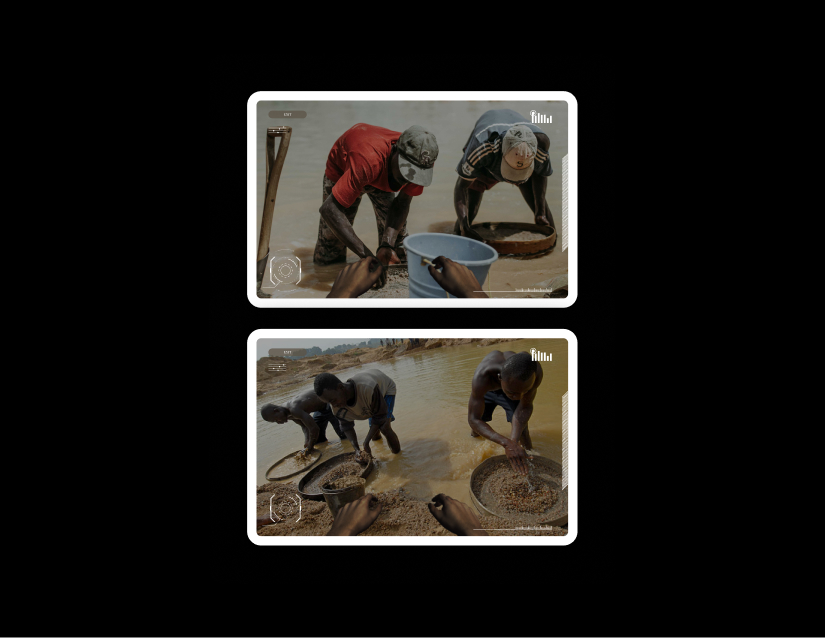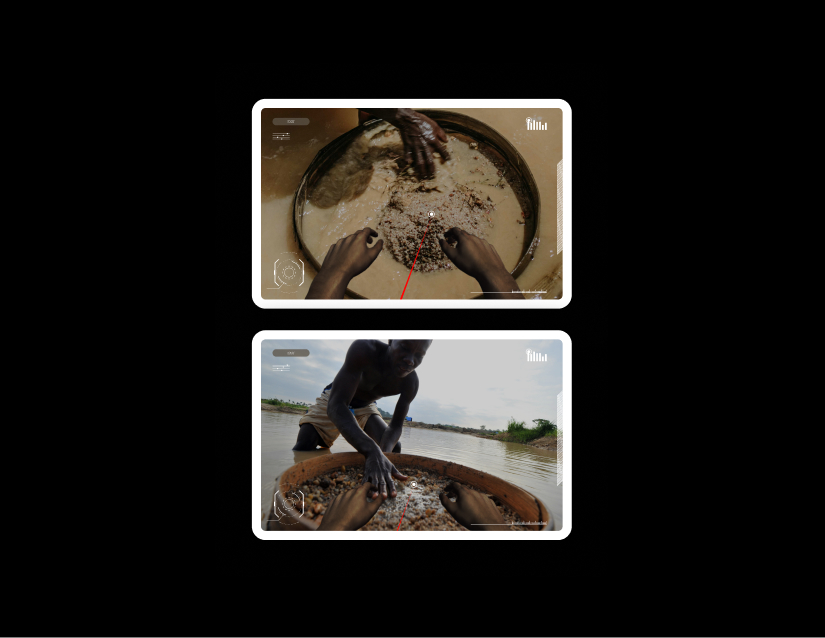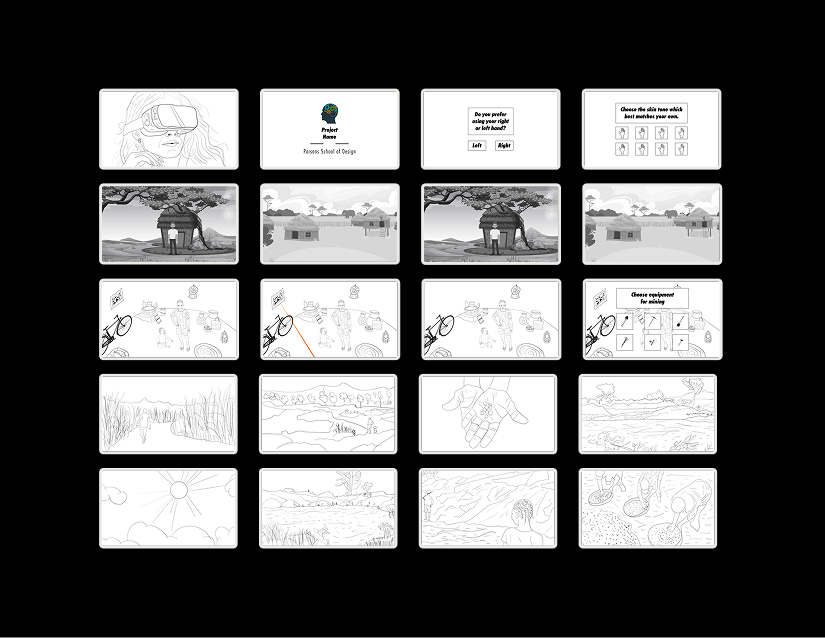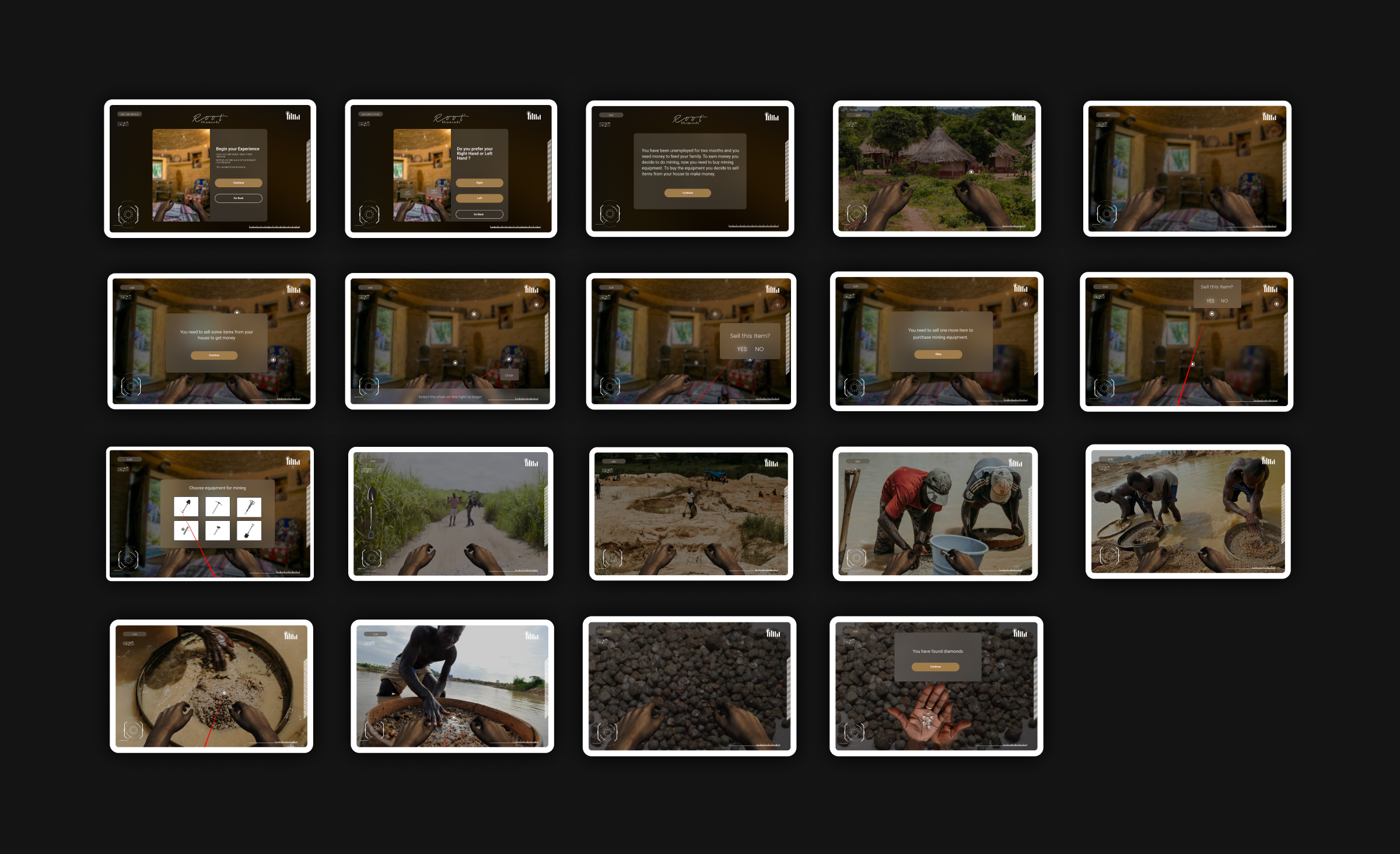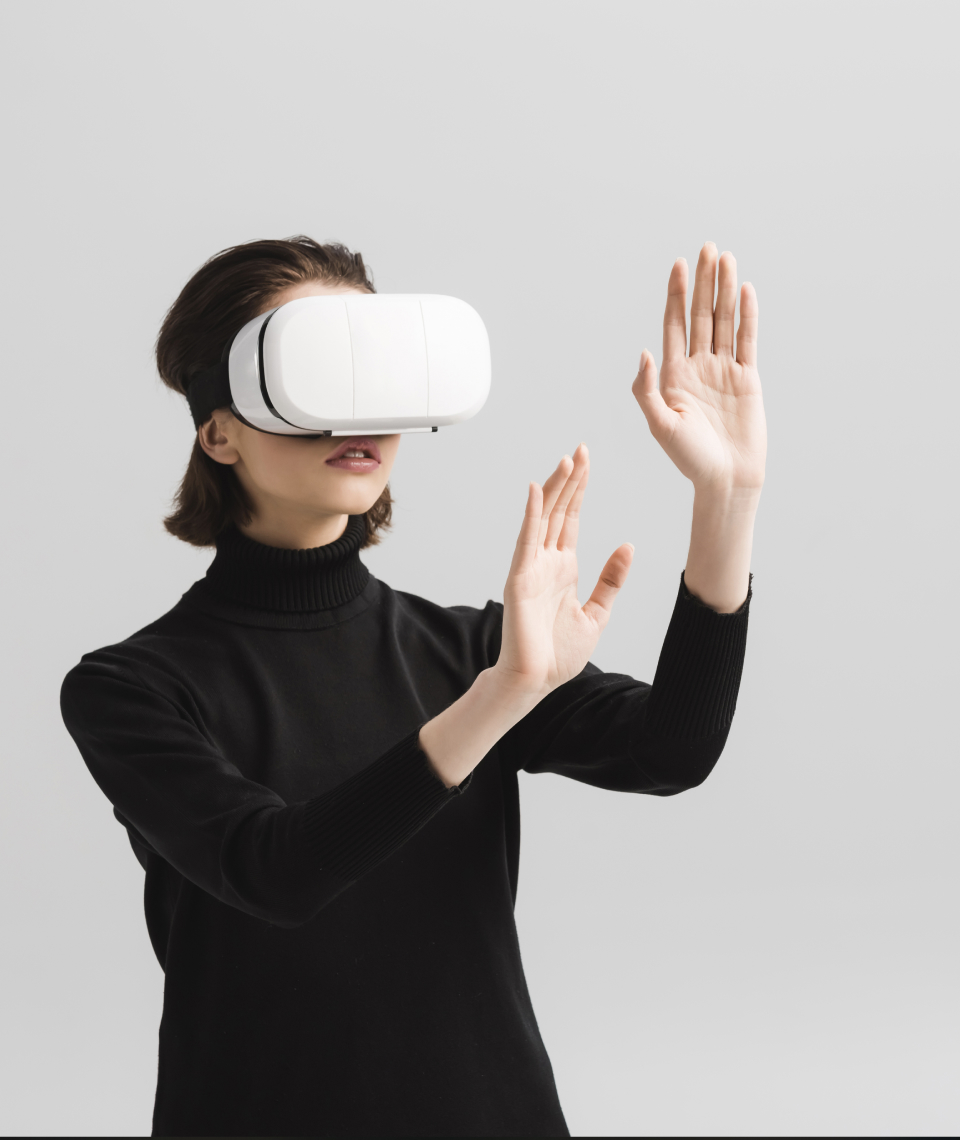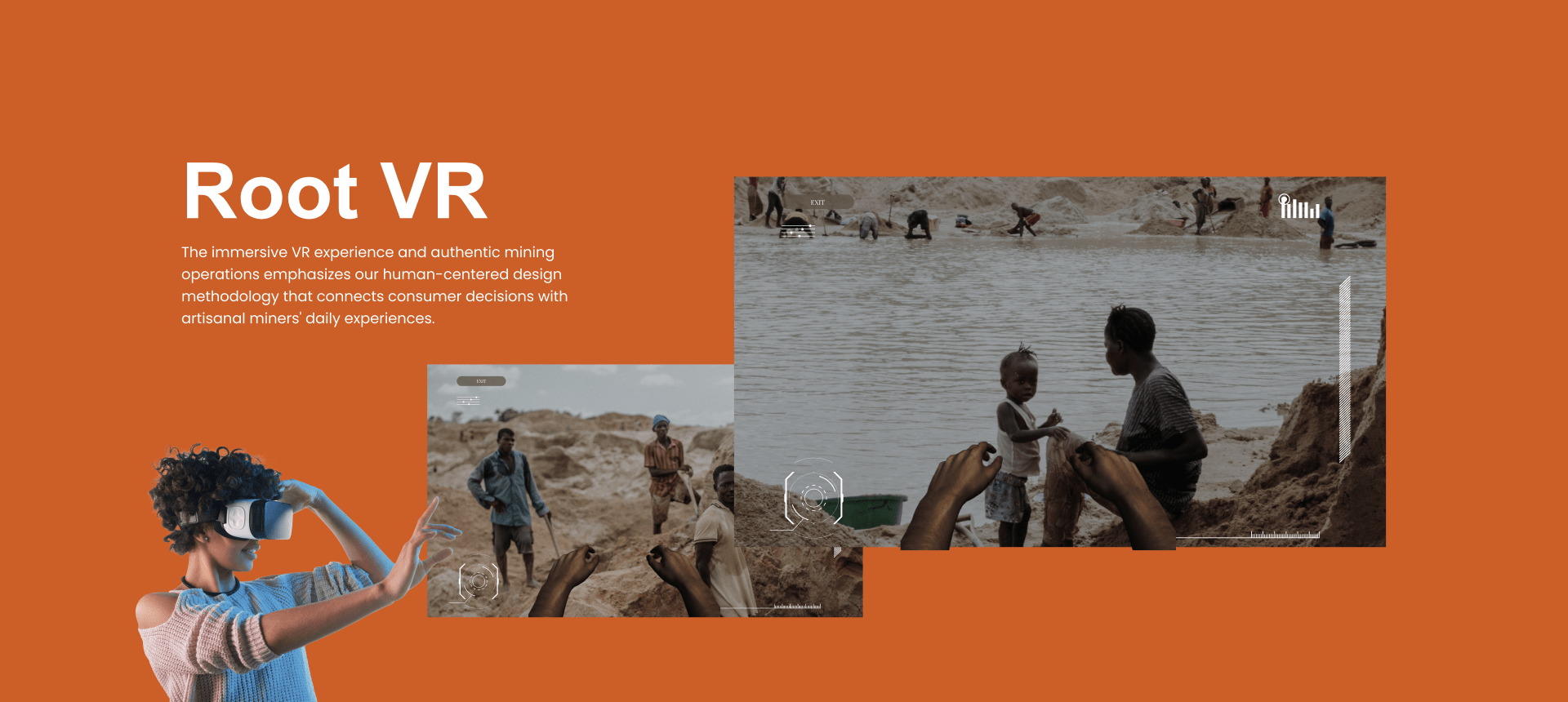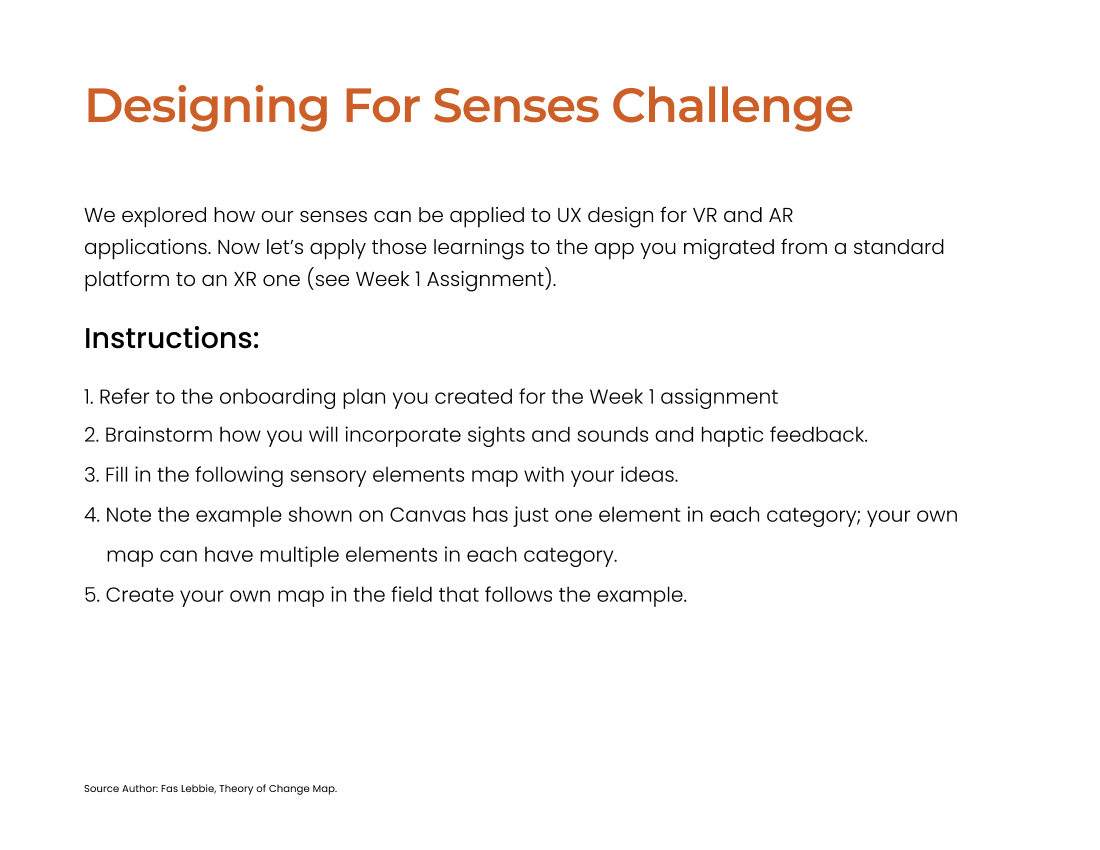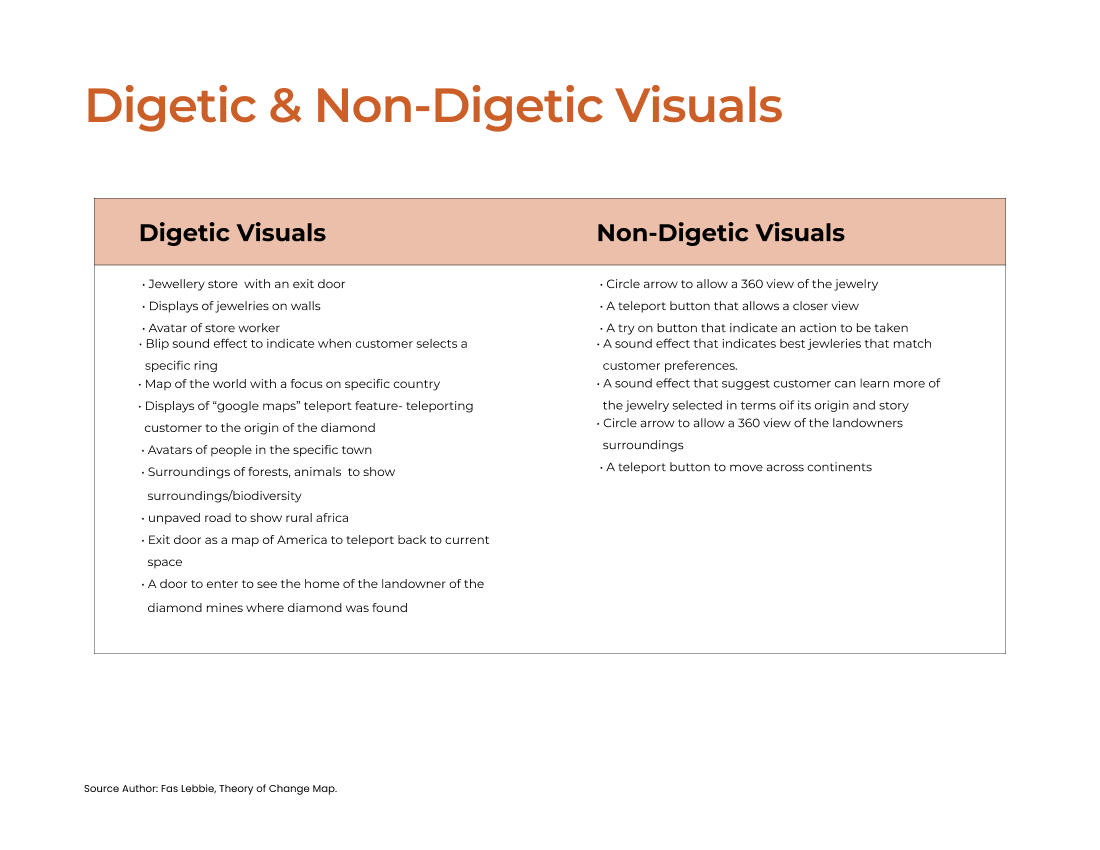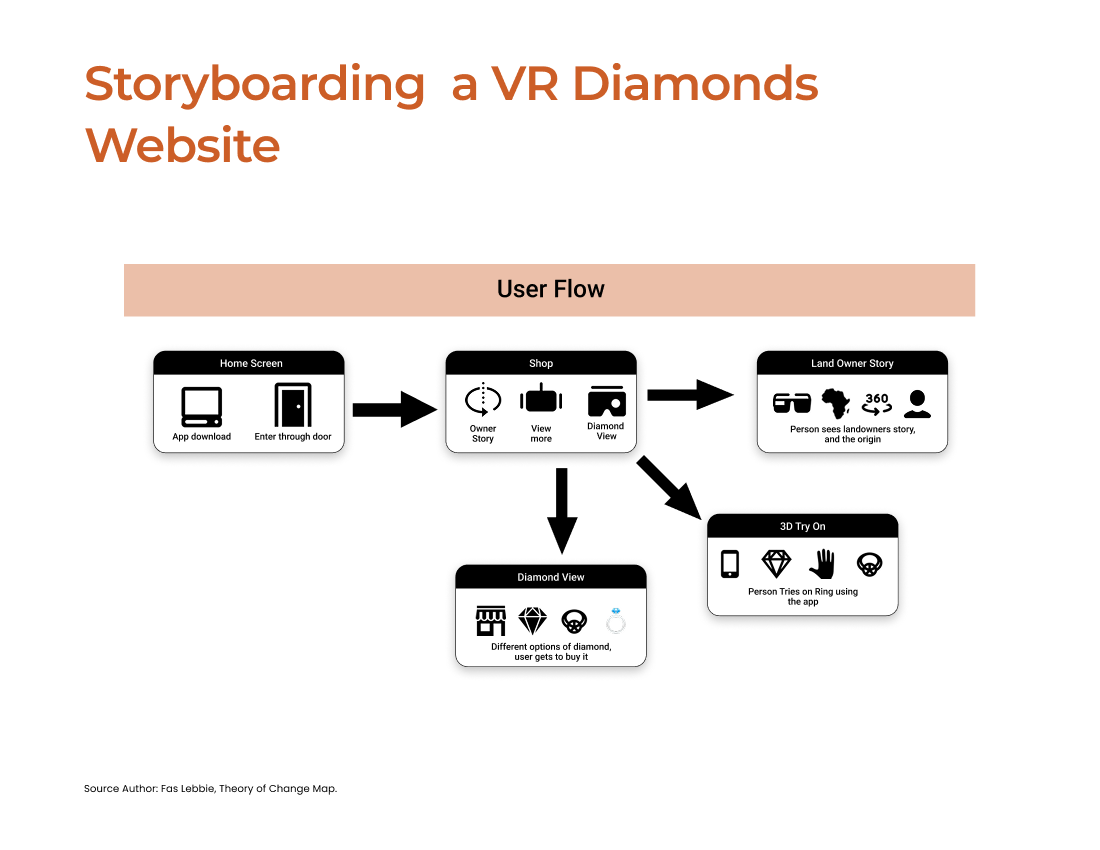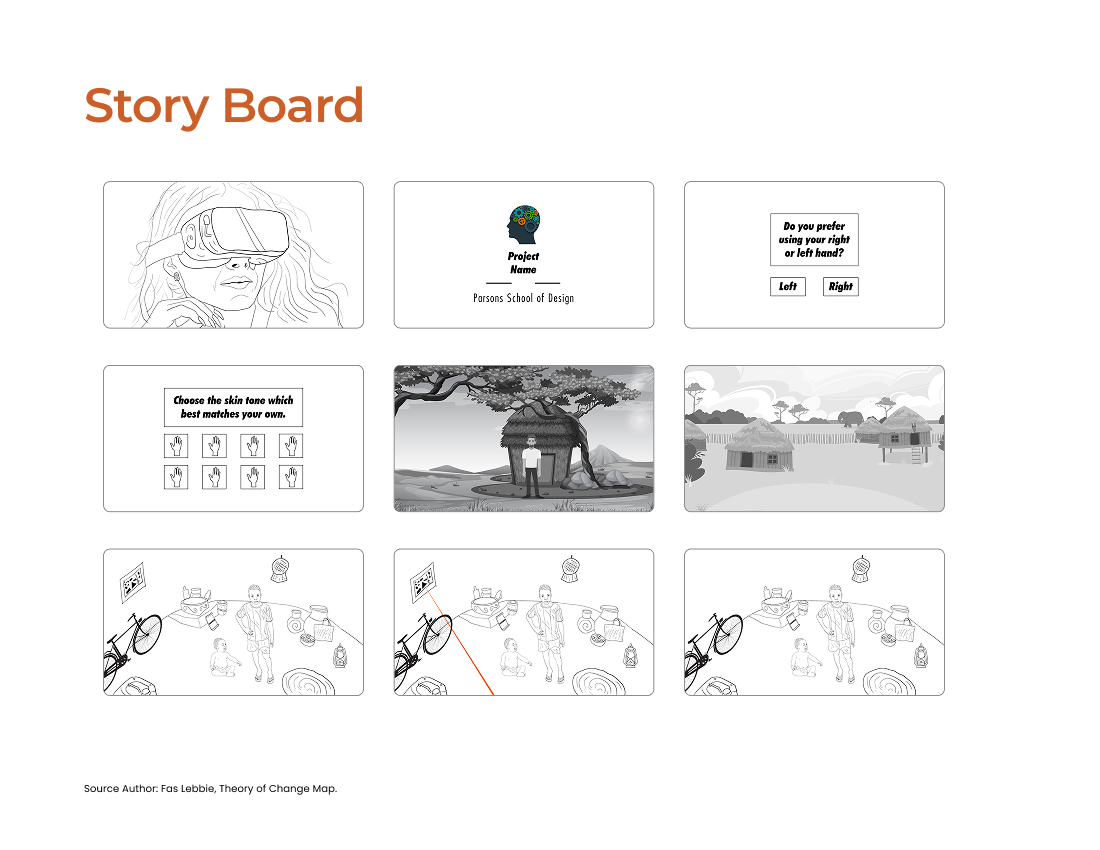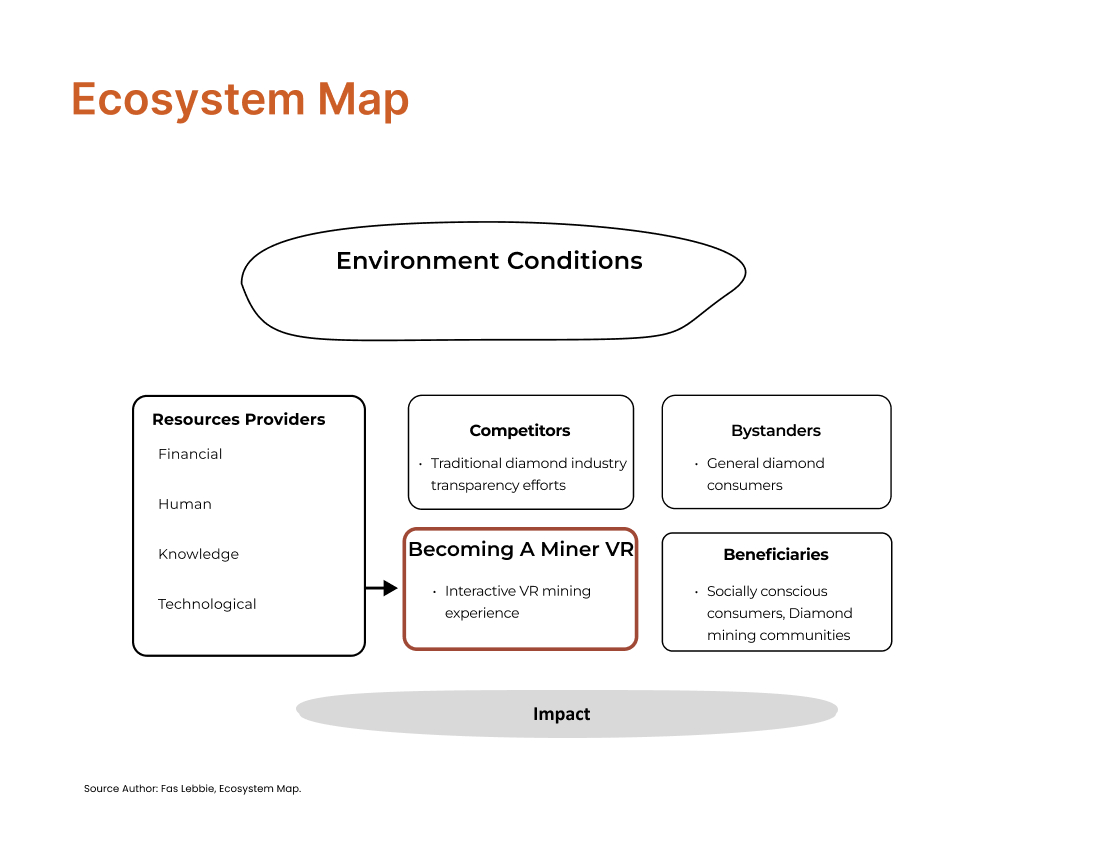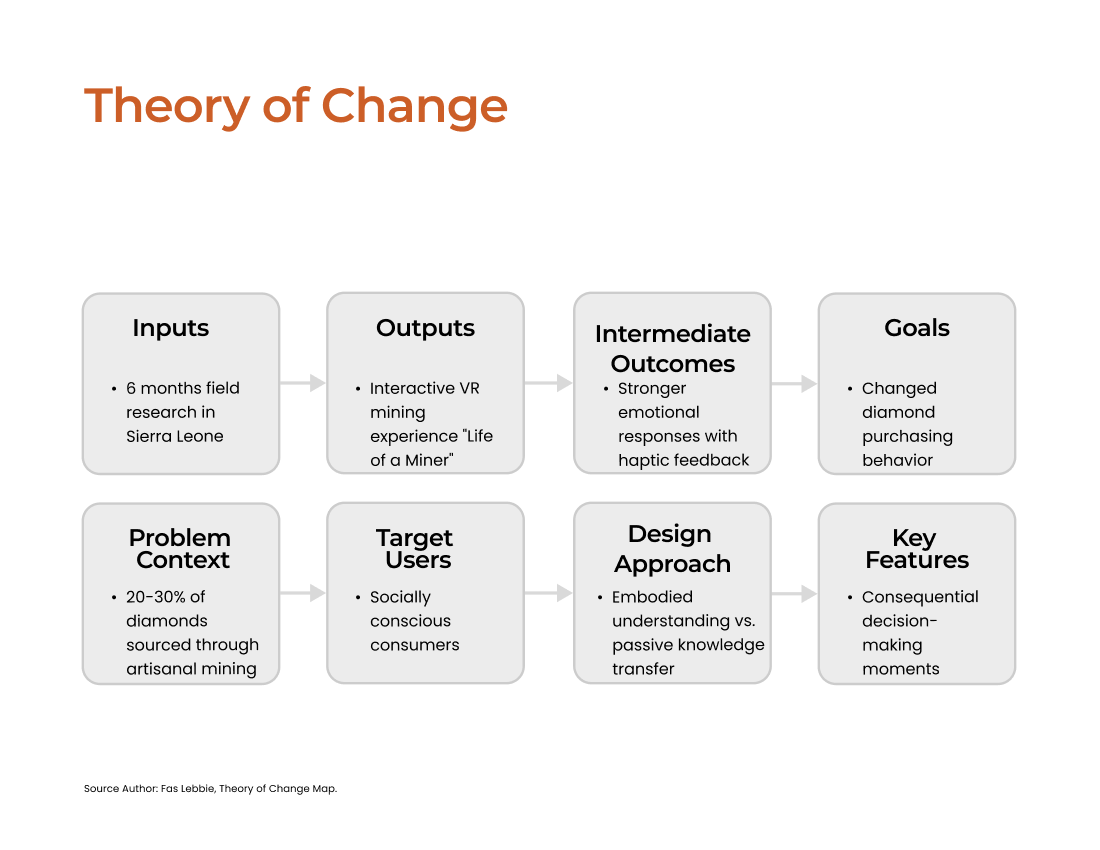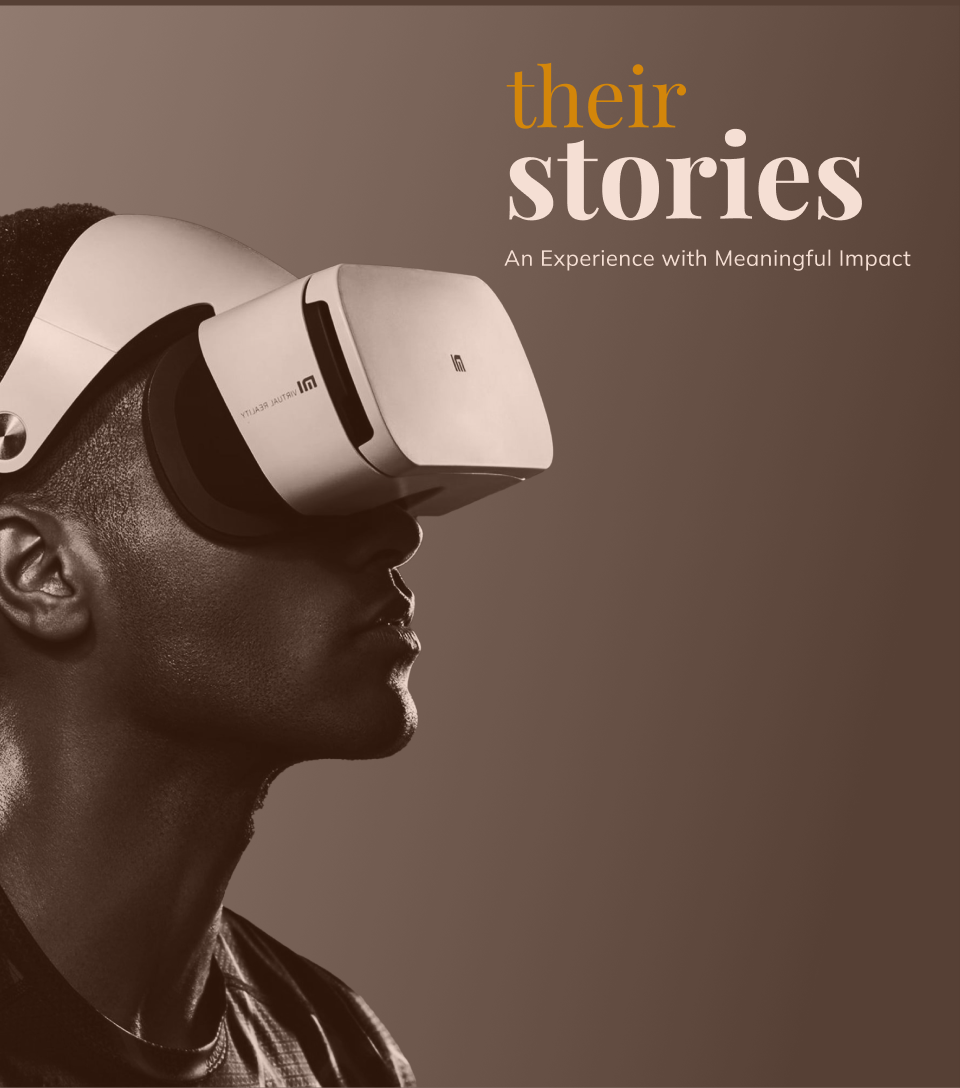Some of our findings on the consumer side reveal that traditional diamond industry transparency efforts are failing to create meaningful connections. Only 63% of consumers engaged with standard educational materials about mining conditions, with even fewer retaining or translating this information into changed behavior. VR’s embodied experience showed the potential to transform passive knowledge into active solidarity, creating stronger emotional connections and knowledge retention than conventional approaches.
The findings highlight miners’ stark realities, including economic pressures that force them to sell personal possessions to obtain essential equipment. They work under hazardous conditions, confronting the dangers of contaminated water and unstable terrain daily. Additionally, the demanding nature of this physical labor takes a significant toll on their bodies, underscoring the urgent need for better support and resources for these workers.
These findings influenced our design intervention, ensuring the final experience was grounded in diamond miners’ realities, aiming to engage consumers in ways traditional methods could not achieve.
The intervention aims to support marketing narratives for our target audience, including socially conscious consumers who care about ethical sourcing but lack tangible connections to the human stories behind their purchases.
We proposed an immersive VR experience that could empower users to temporarily embody a miner’s daily reality, facilitating a simplified yet powerful emotional journey and allowing users to develop solidarity with mining communities without requiring extensive background knowledge. From this, we proposed three facets of intervention that our design solution must have:
- Authentic environmental recreation that represents actual mining conditions ensures users engage with genuine challenges rather than sanitized versions.
- The VR journey will incorporate actual choices miners face daily, translating abstract supply chain concepts into tangible personal dilemmas.
- Embodied physical experience by ensuring users physically experience aspects of miners’ labor through haptic feedback and interaction will be paramount to foster genuine understanding and motivate changed consumer behavior.
